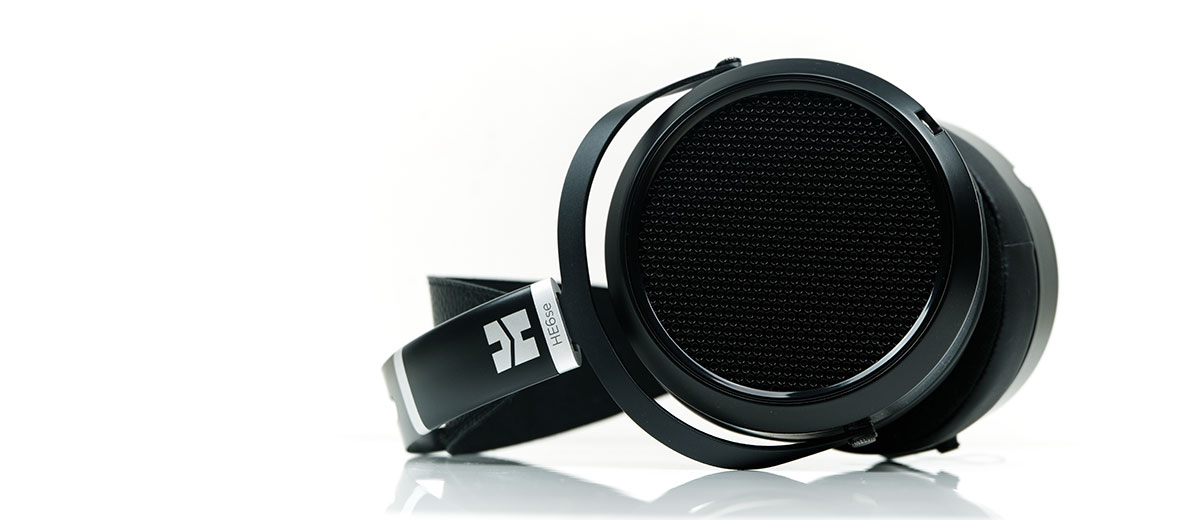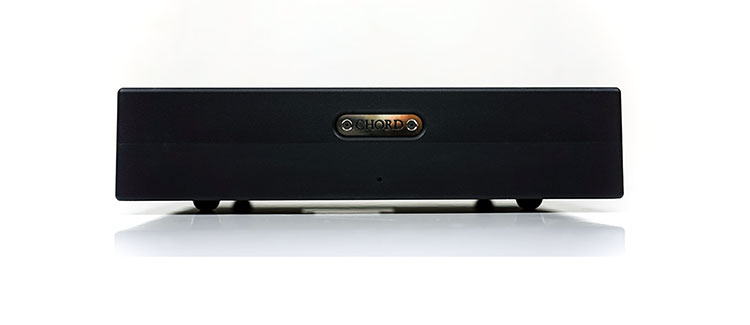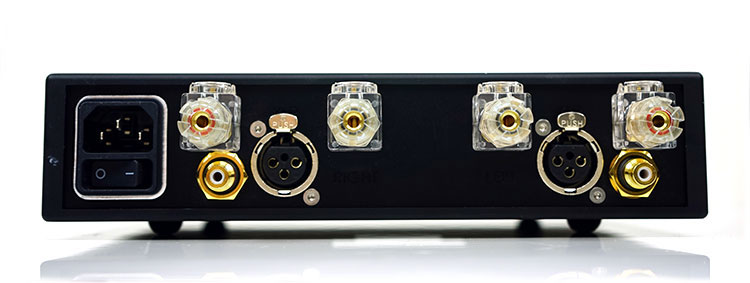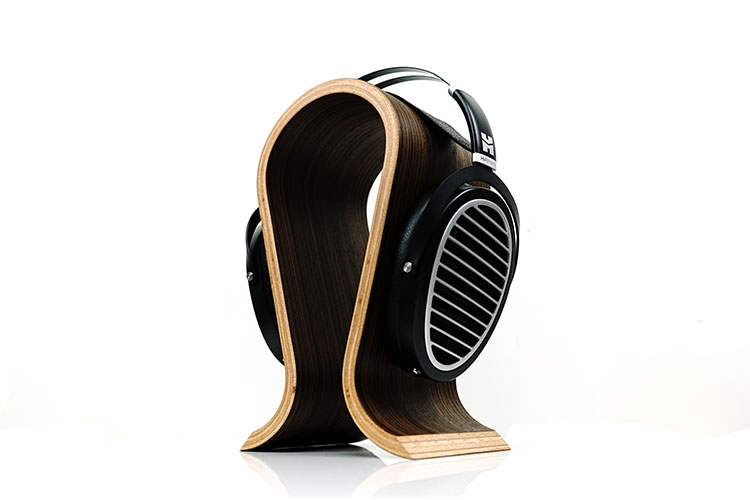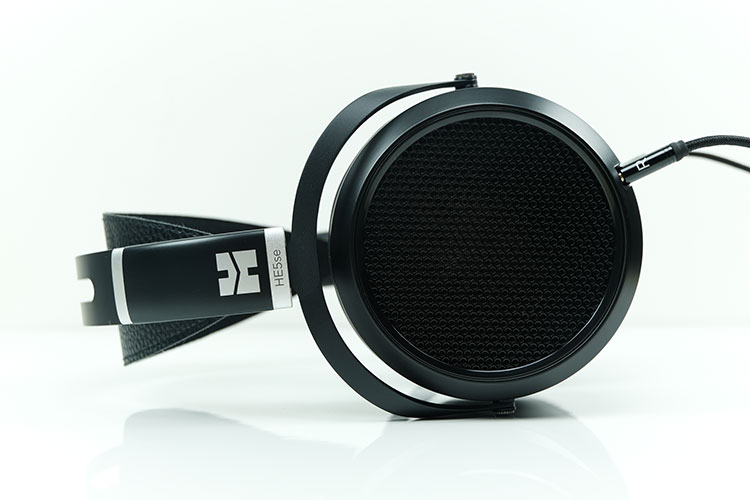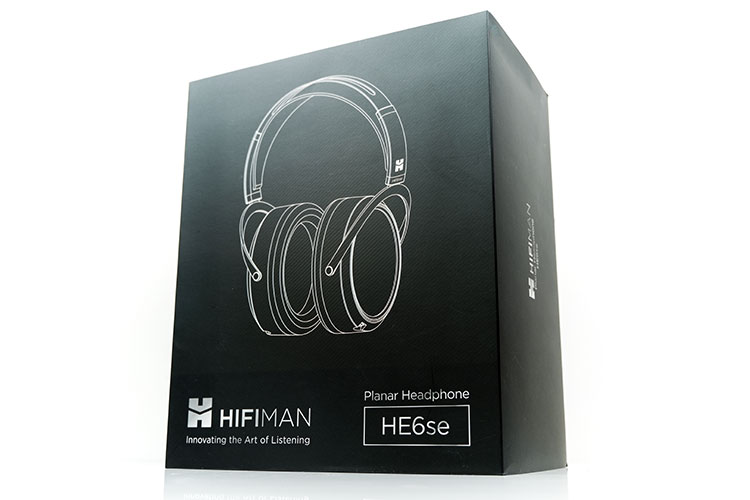Sound Impressions
Summary
So we changed the cables, we also changed the pads, (old leather, new FocusPads), and swapped them around from one headphone to another and yes, the HE6SE has a different tuning to the original 4-screw HE6.
My old HE6 has had 1000’s of hours clocked on them over the years but even then the FR on the original 4-screw would never sound quite like the newer HE6SE if even right out of the box. So what’s changed?
For me, the original HE6 has more sub-bass elevation or power and a 2-3k bump and a 4k dip compared to the new HE6SE’s more linear low-end, a warmer lower-midrange that starts to rise rather than dip from 3-4k. Also, the newer HE6SE does not have quite the same level of elevation from 7-10k as the 4-screw original.
What Hifiman seems to have done is smoothed out the curve a little more on the newer HE6SE and delivered a bit more warmth to the lower mids with the slightly better vocal presence. The 4-screw HE6 has more bass/treble contrast, less vocal presence, and an airier top-end.
The HE6 tone is also a touch cooler with a more odd-harmonic presence and a harder edge to its instrumental timbre. The older build is perceptibly punchier but is also a little more fatiguing in its stock format due to that leaner timbre and stronger upper treble.
You could argue the newer HE6SE is marginally the more forgiving of the two but if you are new to the HE6 family and never heard the original you will still think of the HE6SE as having a fairly peppy treble.
Bass
The low-end on the HE6 is fairly linear from 30Hz up to 300Hz with a slightly rising curve from there up to 1k. Nothing significant or as amplified as the older LCD-2 range so it is not as warm as the pre-Fazor editions but it exhibits a bit more mid-bass to lower-mids presence than the original HE6 4-screw.
The original HE6 exhibits more sub-bass presence with a gently falling curve down to 1k before it hits that midrange dip.
Linear, however, does not mean lacking. It is one of the things I love about the HE6 in general and that’s the depth or extension, quick pace, and a fairly physical characteristic to its presentation.
Hifiman’s newer nano-tech diaphragms on the likes of the Ananda and HE1000 V2 might just have a bit more detail in their low-end texture but they are not quite as punchy or have the same aggression as the HE6SE.
It is also a fairly responsive low-end and not one-noted when it comes to amp matching. We found the likes of the 2W Formula S load to be fairly evenly balanced with the HE6SE but once we switched to the 4.2W balanced output of the Violectric V281 we got a lot more satisfying punch and sub-bass power.
Mids
The HE6SE still exhibits a reasonable dip from 1-2k and in much the same manner the HE6 4-screw follows the same path. However, the HE6SE dip is fairly short-lived with much more of an upper mids to lower treble elevation from 3-5k.
Contrast that with the 4-screw HE6 which has a 2-3k bump and a 4k dip and you begin to see a logic to what Hifiman wanted to do with the new SE edition, particularly when it came to vocals and some higher-pitched instrumental presence.
Vocals that do hit that 2-3k bump on the HE6 has slightly more presence than the HE6SE though I would still not classify either as a forward presentation for vocals in general.
However, the HE6SE vocal timbre is a bit wetter now, slightly softer, and less edgy than the older 4-screw sound. Both do have some nice sibilance control; even when compared to the HE1000 V2 I found the vocal timbre to be more agreeable with less sibilance.
I suspect some of that enhanced lower-mids warmth is just throwing in a little more even harmonic overtones into the HE6SE timbre, in general, affecting both instrumental and vocal overtones. They may not sound as vivid, perhaps not as clean but they do have a more forgiving tone to them
Treble
The HE6SE does not have an especially laid-back treble performance and the upper-mids to lower treble transition is quite elevated showering you with an abundance of percussion presence. Yet, at the same time, the tapering down of the upper treble from the original 4-screw HE6 response takes some of that previous steeliness and heat out of the signature.
As a result, I actually do not find the HE6SE quite as bright and odd-harmonic dominant as the original HE6’s tuning. Yes, some of the sparkle and absolute extension has been pulled back a little but the pay-off is a more satisfying treble coloration with a percussion and synth tone that is slightly less fatiguing and not quite as hard sounding.
Matchability
Efficiency
The HE6 is legendary as one of the hardest-to-drive headphones out there. Rated at 50Ω and just 83.5dB SPL you needed some serious current to drive them. With the exact same specs, the HE6SE displays the same carnivorous attitude towards power.
Underpower the HE6SE and you will find the dynamic range to drop, a loss of definition or low-end presence, and a harsher treble performance. The recommended rating is about 2W upwards per channel so anything less will leave you with a presentation that is too bright and with not enough depth.
Certainly, outside of the 200Ω LCD-4 and the Diana Phi, the HE6SE may underwhelm compared to most modern planars with anything below that output power.
Headphone Amps
We tested 4 headphone amps with more than decent power ratings to find out where exactly the best performance in terms of headroom and current came from. From our testing, the usual recommendation of 2W for me cuts it a bit tight for volume, (current).
Two amps we had rated around 2-3W max into 50Ω, the Xi Audio Formula S, and the Yulong DA10. Both of these are excellent amps with the Formula S the better of the two for timbre IMHO. Both of these amps we could get to a comfortable listening level but with the pots on both rather high. You can go to 0dB on the Yulong unbalanced quite easily on the HE6SE and you do feel the HE6SE could suck up a lot more.
A similar case with the Formula S, a comfortable and enjoyable listening level about 80% on the dial but you can max it out quite easily without ever feeling the HE6SE was being driven too hard. Loud? Yes. Driver blowing power? Not quite. Still, there is much to be said about these two amps in terms of energy with the HE6Se that should negate the need for even more power.
It was not until we started testing the Schiit Mjolnir (5W per channel into 50Ω) and the 4.2W into 50Ω Violectric V281 that we felt the HE6SE had indeed more than enough current and power to be driven properly. Both of these amps had more than enough headroom with both pots on their balanced outputs barely going past ’12 noon’.
Synergy
This will depend on your preferences and how loud you like to listen to your music. With the Mjolnir, the HE6 was dynamic and aggressive with an excellent low-end body and a slightly dry but peppy upper mids and treble.
The V281 was a little darker, a little wetter but with even better low-end power and depth to its staging with the HE6SE. I tended to gravitate to the V281 for most genres as I found it the more refined and forgiving of the two higher-powered amps.
For the Yulong DA10 and the Xi Audio Formula S, the Formula S was the more expansive, with better instrumental separation and a nice sweet tone to the HA6SE timbre. Of the two, I found the Formula S more resolving but also with slightly less bass body.
The DA10 is punchier, a little more low-end weight on the HE6SE but its midrange performance doesn’t jive as well with the HE6SE, sounding a little distant and unemotional compared to the Formula S.
Chord TToby
Technical
We wanted to bring in the TToby a bit more than the other amps due to its output power and the excellent results we had from the slightly more efficient Abyss Headphones Diana Phi. We do have other power amps such as the Burson Bang but the TToby is a superior stereo power amp by a considerable margin.
This is a stereo power amp. The TToby is primarily designed to complement the M Scaler and Hugo TT2 as a stack of sorts but this is by no means an exclusive combo. You can use the TToby with any set of speakers, (2), or in this case, very demanding inefficient headphones.
It is built primarily to drive fairly demanding 2-channel HiFi speaker setups with a fairly small but beautifully designed aluminum form factor. It can be connected in both balanced and unbalanced formats from any pre-amp with compatible RCA or XLR connection outputs.
The TToby is rated at 100W (into a 4Ω load). If I do my math correctly that means around 8W into a load of 50Ω for the HE6SE. However, the HE-Adaptor resistor network will change that and from my understanding, it will calibrate for the higher impedance of the HE6SE to be recognized by the amp at around 8Ω.
That is in the normal range for power amps such as these. An 8Ω rating will drop the output of the TToby down to around 50W per channel which is still pretty powerful compared to most modern dedicated headphone amps.
Set up
The inclusion of the HE-Adaptor with the HE6SE simplifies the connection process significantly by providing 4 speaker posts to the rear that allow you to connect speaker cables from the TToby to the adapter in the usual manner.
In this test case, 12AWG SPC short wire with gold plated banana plugs on either end for quick insertion. The pre-amp is the Burson Play which is an all-in-one DAC (ES9018), amp, and pre-amp using Burson’s very smooth-sounding Classic V6 opamp configuration.
Performance
No question that with a good pre-amp the Chord TToby offers the most headroom and current/power of all the amps tested with the HE6SE. With the Burson Play, (unbalanced), we were sitting around 10-18 steps max on its volume control which is fairly low.
Having said that, I do find the Play to have a fairly aggressive current release, even with its own headphone amp output and most headphones rarely get above 20.
The noise floor is impressively low with the HE6, as it was with the Diana Phi. We did try some more leading planar flagships close to 100dB, such as the Meze Empyrean, and on this setup, the noise floor starts to become a bit pervasive with hiss so we don’t really recommend anything about 94-95dB for this kind of pair up.
Tuning
The Chord TToby, (as a headphone amp), is ridiculously neutral and transparent sounding. It made every single regular headphone amp sound positively colored and allowed each DAC also to tweak the tonal output.
It also has a tremendous turn of pace with the HE6SE combination sounding very articulate and fast with almost every DAC we used. That being said, I found it perhaps the least forgiving of the amps tested with poor DAC/Source tracks in the setup.
The TToby with the HE6SE is not a basshead combination. Do not confuse more power with a heavy-duty rich bass response. It remains impressively neutral and linear throughout.
If you need more low-end body and warmth I would advise switching the HE6SE to the Violectric V281 which is the darker harder-hitting combo of the two. If you want a slightly sweeter timbre then the Xi Audio Formula S will give you that but you do lose just a little low-end body in comparison to the V281 and even the Mjolnir.
What it does do better than the TOTL headphone amps is tease out some excellent staging width, imaging cues, and a much more dynamic soundings midrange/treble performance. To get this level of performance with the TToby/HE6SE you do need to watch your DAC pairing.
DAC Pairings
We tried the Burson Play, Oppo Sonica, and Yulong DA10 delta-sigma builds in both balanced and unbalanced format and each one gave us a slightly different tone to the TToby/HE6SE pairing. However, all 3 sources/preamps seem a little lackluster compared to the Hugo 2’s performance as a DAC with the TToby.
Now that may seem the safe option but, in all honesty, the Hugo 2 sounded a little richer, more rounded, and offered a far more vivid midrange and treble performance. The bass on the HE6SE remained quite neutral still but the lower-mids timbre did sound the richer of the 4 DAC/Pre-amps tested.
The Yulong 2 has the fullest sounding low-end but the mids and treble sounded a bit distant, vague, and not that engaging. The Sonica was more balanced to my ear but not as rich as the Hugo 2 paired with the TToby and HE6SE. The Play V6 has the wettest midrange and some excellent vocals with the TToby/HE6SE but lacks the finesse and excellent layering on the low-end that the Hugo 2 could offer.
Select Comparisons
Hifiman HE1000 V2
$2999
Technical
The V2 is the second of a trilogy of sorts for this particular headphone. The V1 started it all back in 2016 and in 2019 we now have the SE edition which retails at a higher $3500. The SE Edition replaces the V2 but sadly we do not have one here to compare though the presentation is in the same ballpark as the V2.
The HE1K series of headphones use Hifiman’s latest nano-tech super thing diaphragm technology with a dual-sided asymmetrical magnet and window shade grill design.
This is a much thinner diaphragm than the HE6SE whose gold traces design is much older and also more resistant. The specs do speak for themselves with the HE1000 V2 offering lower resistance at 35Ω compared to 50Ω and more sensitivity than the HE6SE at 90dB compared to 83.5dB.
The HE1000 V2 also uses what I term as Hifiman’s second-generation headband and gimbal form factor with much longer cup and pad designs than the traditional rounded shape of the HE6SE.
Whilst there is some debate on the fragility of the older design around the pivot blocks I do generally find the HE1000 V2 headband and lateral cup movement to be the comfier of the two designs. The weight is also in favor of the V2 shedding an additional 60g over the HE6SE which does enhance the comfort levels.
Tuning
(Setup: Xi Audio Formula S/Violectric V281 – Chord Qutest – Foobar – a mix of FLAC & DSD)
Low-end
The low-end on the HE6SE is denser, fuller sounding by a small margin but does not have quite the same level of definition as the HE1000 V2. Both have a fantastic extension but the detail in the texture of the HE1000 V2 low-end has a more articulate feel to it. The HE6SE low-end sounds ever so slightly softer with more of a mid-bass to lower-mids lift than the HE1K V2 when going through some of my reference sequences.
For example, Advection Stride’s first 7 seconds of its moody synth intro of “Megaforce” is really just an expose in sub to lower-midrange layering. With both headphones, the extension and coloration are just right. With the HE6SE on a macro level, the power and aggressiveness seem more evident. However, with the HE1000 V2, you can pick up the synth’s harmonic changes and better spacing in-between a little more clearly.
Mids
The HE1K has more upper mids presence than the HE6SE with an FR curve that rises earlier, around 2k gradually peaking at about 5k whereas the HE6SE still has a relative dip until 3-4k before a quick rise at 4-5k where it stays fairly elevated to 8-10k though not quite as high as I was expecting.
Male vocals do tend to perform better on the HE6SE as a result with the HE1K making a better show of higher-pitched female vocal presence.
Both are not the most forgiving of poorly recorded tracks but I find the HE6SE to show a bit more control on sibilance compared to the HE1K. I tend to revert to Buika’s breathy, almost raspy, vocal tones and her Las Culdades recording to test for sibilance.
The HE6SE maybe the more forgiving with less odd-harmonic overtones but that level of detail in Buika’s vocal texture is better on the HE1K.
Treble
The HE1K V2 is similarly peppy in its treble response up to 10k. Combined with that upper mids elevation it does deliver more percussion presence than the HE6SE but with a slightly more of an odd-harmonic overtone.
That upper-mids odd-harmonic overtone has more contrast with the lovely detail and slightly better texture of the HE1K’s lower mids to create quite a vivid presentation. Some might prefer the more consistent timbre of the HE6SE as a result. Percussion timbre is not quite as splashy and energetic which balances nicely with the more neutral lower-mids instrumental timbre of the HE6SE.
Hifiman Ananda
$999
Technical
The Ananda is a 2nd generation Edition X in terms of purposing but drawing from the Sundara range of nano-tech particle thin diaphragm technology called NsD, (NEO supernano Diaphragm). The big emphasis with the Ananda is the level of efficiency at just 25Ω and 103dB. This is a much easier planar headphone to drive than the HE6SE and is comfortable off good quality DAPs as much as solid desktop headphone amplifiers.
The form factor of the Ananda is a mix of the HE6SE and the HE1K/Edition X design. Both the Ananda and the HE6SE share the same matte black rigid headband/adjusting strap and gimbal system. That means no lateral cup movement but better pressure displacement on the head and for me, a slightly better height adjustment for varied head sizes.
The elongated cup shaping, drivers, and pads pull from the HE1K series but retaining the HE6SE matte black finish. The weight is solidly in favor of the Ananda at 399g compared to the HE6SE’s 480g and you do feel that difference on your head.
Both headphones also now use the dual entry 3.5mm jack system whereas the HE1K used the slightly shakier 2.5mm dual-mono jack system. The Ananda also comes with a single 1.8m 3.5mm jack cable and a 6.35mm alternative.
Tuning
(Setup: Xi Audio Formula S/Violectric V281 – Chord Qutest – Foobar – a mix of FLAC & DSD)
Low-End
In some ways what applies to the HE1K V2 also applies to the Ananda when compared to the HE6SE. In short, the HE6SE has the PRaT and the Ananda has the precision.
The HE6SE definitely hits harder than the Ananda with less of a low-end roll-off and generally capable of delivering more sub-bass power. The Ananda, however, feels a touch more articulate in the low-end and slightly tighter in its delivery. The detail again in the new NsD driver just seems more adept at teasing out nuanced cues and detail in the low-end texture compared to the HE6Se’s power approach.
Mids
The mids on both are slightly dipped and the Ananda maintains that dip a little bit longer than the HE6SE. Both have a slight rise up to 1K so male vocals do quite well in terms of presence and both recess post 1k for female vocals.
The Ananda stays dipped until around 5-6k and gets quite elevated around 7k whereas the HE6SE has a more pronounced rise starting around 3-4k. As a result, instrumental positioning on the Ananda is a little further back than the HE6SE but at the same time offers a bit more separation and clarity.
Whilst female vocals do not sound forward on either, the HE6SE has a bit more body to its timbre and the Ananda vocals timbre draw from that treble elevation sounding a little brighter.
Treble
Treble on both is a little different though both are what you could define north of neutral though with the right amp pairing neither are irritating or overly harsh. The Ananda start to roll-off a little beyond 7k so it avoids sounding sharp to my ears but it’s not endowed with a tremendous amount of body. Instead its more on the smooth, ethereal side with plenty of headroom and air.
The HE6Se does not sound quite as airy, a little more intimate but it does not have the same level of 7k emphasis that the Ananda has. It feels a little more even in amplitude with more body which I do like.
Hifiman HE5SE
$699
Technical
The HE5SE came out at the same time as the HE6SE last year and like the HE6SE it uses a previous driver inside a new form factor or design. This time it is the original HE5 driver which uses aluminum voice coil tracing instead of the denser gold alternative of the HE6SE.
If I am not mistaken though this is the second relaunch of the HE5 with the first a few years back in the older piano black body, FocusPads, and the original headband of the HE6. This time, the HE5SE is launched with the same headband and gimbal system as the HE6SE as well as that matt black finish with traditional circumaural cups, FocusPads and the 3.5mm dual entry system.
Save for the HE5SE moniker on the side, the HE5SE looks exactly the same as the HE6SE. You will, however, notice a weight difference right away between these two with the new HE5SE coming in at 387g compared to the HE6SE’s 480g.
The original HE5 weighed a lot more at 450g so that is some weight reduction on the new design. That does make a slight difference to the comfort levels with the HE5SE the lighter of the two on your head but the comfort gap between these two is really quite minimal.
Other differences compared to the HE6SE include a cheaper retail box package used with the likes of the Sundara which only has a satin cloth fill. The HE5SE also uses a nylon weave 3m 6.35mm terminated cable and does not have any HE-Adaptor or balanced cables in the box.
Tuning
(Setup: Xi Audio Formula S/Violetric V281 – Chord Qutest – Foobar – a mix of FLAC & DSD)
The HE5SE is rated at 40Ω and 91.2dB SPL. That is more efficient than the HE6SE for sure but I would still class the HE5SE as relatively hard to drive. When you consider modern planars are hitting around 100dB such as the Ananda, (103dB) and the Meze Empyrean, (100sB) it is clear the HE5SE’s older driver design does pair better with more powerful desktop amps.
Treble
The primary difference between these two that you will pick up right away on is the emphasized upper treble of the HE5SE. The HE6SE does have a peppy treble but it is attenuated compared to the HE5SE, particularly around 7-10k where the HE5SE has far more amplitude in its tuning.
This, in turn, has a big effect on the higher-pitched instrumental timbre which sounds brighter, leaner, and with more odd-harmonic overtones compared to the HE6SE which sounds more accurate in its instrumental timbre.
The nice thing though about the HE5SE treble timbre is that I do not find it overly peaky or terribly unbalanced despite it being inherently bright sounding. It does deliver a lively contrast to the otherwise quite linear planar low-end that many will enjoy, particularly for string timbre which stands out quite well on the HE5SE.
Mids
Mids on the two are also slightly different though both have a post 1K dip which pushes back higher-pitched vocals a touch. The HE5SE higher-pitched vocals also pull from that treble elevation so they tend to sound a little sharper with less body and presence than the HE6SE vocal performance.
Low-end
The low-end on the HE5SE has slightly less body and sub-bass presence compared to the HE6SE. I would say there is an approx 2-3dB drop on the HE5SE low-end compared to the HE6SE but not a vastly different FR tuning. It is still relatively punchy and clean to my ear and definitely is not a lean bass performance. Rather, the HE6SE is just the more physical and powerful of the two bass signatures.
Our Verdict
Relaunching a headphone that first hit the scene around 10 years ago is fun but fraught with technical conundrums. On the one hand, it is an excellent planar headphone with a physical low-end, excellent depth, and with a powerful amp capable of some excellent impact and dynamic range. Its new design is more comfortable and lighter than the original HE6.
I am also very glad I have the right amps this time around so 90% of our meet conversations do not center around ‘clipping’ concerns. In today’s market, the HE6SE still wipes the floor with a ton of lesser planar headphones out there including 1 or 2 that were in the same price bracket.
On the other hand, Hifiman has been working on improving their planar drivers in those 10 years and they have always stated that each subsequent driver release, particularly the nano-tech builds, yields more speed and detail than the previous older designs.
And such is the case when compared to higher-end models such as the HE1000 series and even the cheaper Ananda. Even then, the HE6SE is not quite a faithful reproduction of the older HE6 sound signature with some tweaks, especially in the low-end and amount of upper treble presence.
The HE6SE, therefore, has its own unique sound, and buying this is more about personal taste than seeking technical superiority or even an accurate duplicate of a classic headphone in 2019.
HIFIMAN HE6SE Specifications
- Frequency Range: 8-65,000 ohms
- Nominal Impedance: 50 ohms
- Sound Pressure Level (SPL): 83.5 dB
- Weight: 480g
Chord Electronics TToby Specifications
- Output Power: 100w RMS per channel @ 0.016% distortion into 4Ω
- Frequency Range: 5Hz – 100kHz +/- 0.5dB
- Signal to Noise Ratio: Better than -83dB
- Channel Separation: Better than 95dB
- Input Impedance: 100kΩ Unbalanced/Balanced
- Input Capacitance: <32pf
- Output Inductance: 2.6μH
- Slew Rate: 70v per μS 1kHz, 20v Square Wave
- Gain: 30dB
- Stability: Unconditional
- Dimensions: 235mm (w) x 225mm (d) x 55mm (h)
- Weight: 3.75kG

